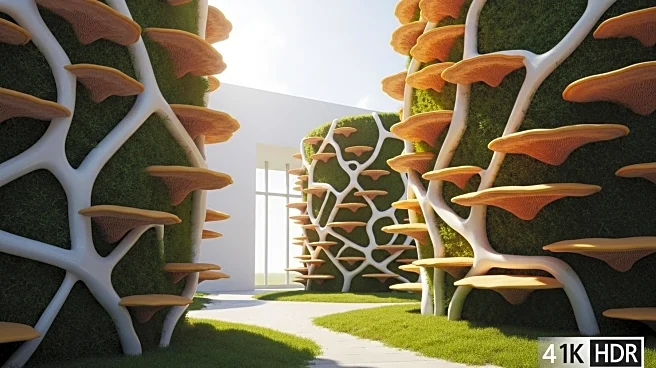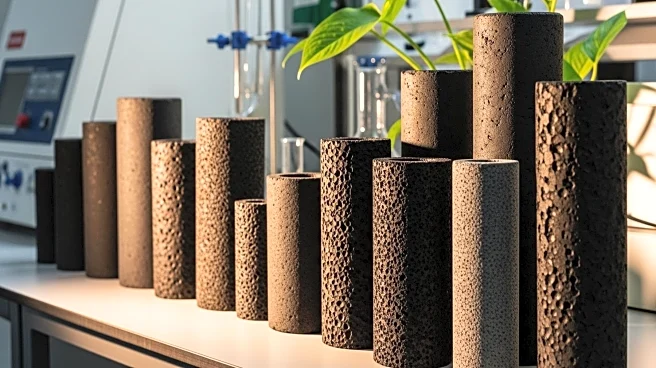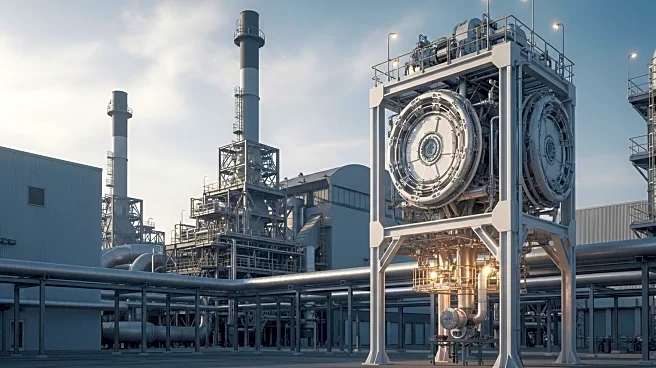What's Happening?
Researchers funded by the EU are exploring the use of fungi to create self-healing building materials. Led by Professor Han Wösten from Utrecht University, the team is cultivating fungi on agricultural waste to develop materials that can adapt and repair themselves. These engineered living materials (ELMs) fuse fungal mycelia with bacteria, offering sustainable alternatives to conventional construction materials like concrete and plastic. The initiative, known as Fungateria, aims to create materials that can grow, repair themselves, and sense environmental changes. This research is part of a broader effort to develop smarter, greener architecture that reduces waste and carbon emissions.
Why It's Important?
The development of self-healing building materials represents a significant advancement in sustainable architecture. Traditional construction materials contribute to a large portion of waste and greenhouse gas emissions. By using fungi-based materials, the construction industry can potentially reduce its environmental footprint and enhance material efficiency. These materials offer the promise of buildings that can repair themselves, absorb CO2, and clean the air, aligning with global efforts to combat climate change. The research also challenges conventional architectural practices, encouraging a shift towards materials that work in harmony with nature.
What's Next?
The Fungateria research team plans to continue their collaboration until late 2026, focusing on refining the growth control of fungal materials. They envision a future where buildings are constructed using wood and fungus matter grown on agricultural waste. As the demand for sustainable solutions increases, these materials could become integral to modern architecture. The researchers are also engaging the public through exhibitions and workshops to promote the concept of living buildings. This initiative may inspire further innovations in biohybrid architecture and influence future construction practices.
Beyond the Headlines
The use of living organisms in building materials raises ethical and social considerations. While the idea of living buildings may initially unsettle some, it represents a paradigm shift in how society views construction and sustainability. The integration of biology and architecture could lead to new cultural and aesthetic values, redefining the relationship between humans and their built environment. This research also highlights the potential for interdisciplinary collaboration, bridging fields from microbiology to architecture and ethics.












